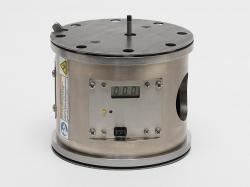I know that AASHTO T312 requires a gyratory compactor to operate at an internal angle of gyration of 1.16° ±0.02°. But, what impact does variation in this angle really have?
A low angle of gyration leads to less compaction and higher air voids. A 0.1° drop in the angle of gyration lowers the bulk specific gravity of an asphalt specimen by 0.010 to 0.015.
So it does make a difference. Now, what should I pay attention to because of its potential effect on the internal angle of gyration?
- Get your gyratory compactor standardized annually by a qualified technician with properly calibrated equipment to measure internal angle of gyration. This is your baseline. An incorrect baseline makes everything dependent upon it incorrect.
- Clean molds and end plates after each specimen has been produced. Debris and binder buildup on mold end plate surfaces and on critical mold contact points can alter the angle of gyration applied to the specimen. Clean a mold with heavy asphalt residue by warming the mold to 140°F (60°C) and applying a solvent. WD-40 works well as a solvent and leaves a residual coating that inhibits corrosion. DO NOT use an ignition oven to remove binder residue from the mold. High heat will deform the mold making it unusable and unrepairable.
- Clean the ram foot carefully before each use. Debris between the ram foot and base plate will tilt the base plate, which will affect the angle of gyration applied to the asphalt.
- Use end plates with pockets on the side that faces away from the asphalt. The pockets provide relief space for excess lubricant and debris so that it does not affect the angle of the plate and thus the internal angle of gyration. If you have pocketless plates, pockets can be milled into existing plates.
- Maintain a clean compaction chamber. Debris between the mold and the surface on which it sits can affect the angle of gyration. WD-40 is an effective cleaning agent to remove asphalt residue.




